Whether you are a budding formulator or planning to start your homegrown skincare brand, some products are must-haves. Emulsifying wax and beeswax are two of the most important ingredients if you are planning to make exquisite body care products. But don’t get confused by the similar names- they are different products in reality.
Emulsifying wax is an emulsifier that is used to create an emulsion, while beeswax is a form of wax derived from the bees and can be used as an emollient, thickener, herbal ingredient, and humectant in the formulation.
Let’s take a look at how they are different from each other.
What Is Emulsifying Wax?
The word emulsifying wax describes the product in itself. Simply speaking, it is a wax that helps to stabilize emulsions.
Emulsifying wax is popular with body care products these days because they are mostly derived from vegetable sources. They are produced when a plant-based wax is treated with detergent. This combination allows it to bind water and oil together and create a smooth emulsion.
Generally, the primary ingredients are fatty acid and Cetearyl alcohol. However, not all combinations of these two compounds are called emulsifying wax. A compound is called emulsifying wax only if it meets the standards set by USP-NF.
Emulsifying waxes have a waxy white appearance and a slightly alcohol-like odor. It has a usage rate of 2% to 10% of the final weight of the formulation.
Some of the most widely used emulsifying waxes are:
- Polawax
- Emulsimulse
- Emulsifying Wax NF
- BTMS 50 And BTMS 25
- Olivem 1000
What Are The Benefits Of Using Emulsifying Wax?
A popular base for creating lotions, creams, and other body products, emulsifying waxes bring a whole range of benefits to the table. The reasons why emulsifying wax is preferred by all formulators are as follows:
- Emulsifying wax acts as a good binding agent for water and oil. Thus it improves the shelf life of cosmetic products and stabilizes the formulation.
- Emulsifying waxes are safe for use for all skin types.
- It makes the product more creamy and improves its moisturizing capability.
What Is Beeswax?
Beeswax is another form of natural wax. As the name suggests, beeswax is obtained from bees. Being a natural product with negligible toxicity, it is used as a lubricant or polish and even in making cosmetic products.
Chemically, beeswax is a long chain of fatty acids and alcohol. It has a yellowish-brown color, and it’s brittle at room temperature. The melting point of beeswax is 60℃ to 64℃.
Beeswax has abundant nutritional and medicinal benefits. Because of its anti-inflammatory and antimicrobial properties, it is used in treating small wounds. Beeswax is also useful in treating skin irritation. Besides, beeswax is a good source of vitamin A and antioxidants. It can promote cell repair and moisturize dry skin.
How Is Beeswax Made?
The process of making beeswax has two phases. In the first phase, the worker bees produce the wax from their glands. In the second phase, the wax collectors process the beeswax to get the form that is available readily.
Beeswax of the honeycomb smells like honey and has a yellow to yellowish-brown color depending on their degree of contamination.
What Are The Types Of Beeswax?
Ideally, there are three types of beeswax. The physical properties and application of each type of beeswax vary according to the degree of refining that it goes through.
- Yellow beeswax is the raw product that is obtained from honeycombs. The yellow color is mainly due to contamination of the wax by the pollen brought by the worker bees.
- White beeswax is obtained when yellow beeswax is bleached in sunlight.
- Absolute beeswax can be made by treating yellow beeswax with alcohol.
What Are The Benefits of Using Beeswax?
As a natural source of wax, beeswax has found its application in the body care industry. Mainly because of its moisturizing properties, beeswax is used in soaps, body butter, and body lotions. Additionally, beeswax is used in hair and beard styling products to give a smooth appearance.
The main benefits of beeswax in skin care are as follows:
- Beeswax acts as barrier protection. By being non-comedogenic, it does not clog skin pores but simultaneously provides prolonged barrier protection.
- Beeswax is used in making soaps. This is because it has good antifungal and antibacterial properties that protect the skin from infections. Beeswax soaps are gentle on the skin and are used by people suffering from eczema.
- Beeswax is also useful in reducing skin itching and irritation. Because of its antifungal and anti-allergic properties, beeswax is used to treat skin burns, psoriasis, and eczema.
- Another prominent effect of beeswax is found in treating stretch marks. As beeswax contains Vitamin A, it can boost collagen production and reduce the appearance of stretch marks.
- Beeswax is a natural emollient and humectant. This means that it can not only attract moisture but lock it in our skin too. This makes it useful for people with dry skin who experience flaking and cracking.
Can I Use Beeswax Instead Of Emulsifying Wax?
Although the names sound similar, beeswax and emulsifying wax are different products. In reality, beeswax is simply wax, while emulsifying wax is an emulsifier. This means that beeswax cannot hold the oil-water blend together that is needed in lotions.
To convert beeswax into an emulsion, you can add borax to it. However, this process has two downsides:
- The beeswax-borax emulsion has oil and water in a 1:1 ratio. This makes a very greasy lotion and is unsuitable for skincare.
- Borax is an alkaline substance and causes irritation on the skin. Besides, prolonged usage of borax has been linked to cancer, birth defects, and peeling of the skin.
Simply put, you cannot replace emulsifying wax with beeswax. The best replacement for an emulsifying wax is another emulsifier itself.
Is Beeswax Better Than Emulsifying Wax?
Although both beeswax and emulsifying wax have their applications in skincare, they are different products. Both these products have a different set of benefits when used in body lotions, soap, and other skincare products.
The main function of emulsifying wax is to hold the oil and water together by creating emulsion and providing a stable emulsion. On the other hand, beeswax is used to thicken the mixture, attract moisture, and improve the product’s ability as a moisturizer. Besides, beeswax also has healing and anti-inflammatory properties that will add to the medicinal value of the product.
While some might argue that the beeswax-borax mixture acts as an emulsifier, there are side effects of using borax in skincare due to its carcinogenic nature. Thus, instead of comparing beeswax and emulsifying wax, we can use them together for their individual benefits.
Can Emulsifying Wax Be Used as Beeswax?
No, emulsifying wax cannot be used as beeswax. By replacing beeswax with emulsifying wax, you will not get the benefits like antimicrobial, moisturizing, and barrier strengthening properties.
Can I Use Beeswax and Emulsifying Wax Together?
Yes, beeswax and emulsifying wax can be used together. Beeswax can be added as a thickener, emollient, and as an herbal ingredient in the formulation. If the right amount of emulsifying wax is used and the emulsion is prepared appropriately, then you can add beeswax to your formulation.
By adding beeswax with emulsifying wax, you can add medicinal benefits to the cosmetic product. Beeswax is a humectant that will attract moisture and lock it on the surface of the skin. It will also seal the moisture, strengthen your skin’s barrier, and calm irritations on the skin. And emulsifying wax will combine the oil and water together and will create a stable emulsion.
How Do You Emulsify Beeswax?
Beeswax is not an emulsifier in itself. However, to use beeswax in cosmetic products, you need to emulsify beeswax with water.
The process of emulsifying beeswax requires precision and careful regulation of temperatures and quantities. Here is how you can emulsify beeswax:
- Heat the beeswax in a water bath at 70℃, or until it melts.
- Simultaneously, heat the borax to the same temperature in a water bath in a separate container.
- In a mixing bowl, add the heated beeswax and borax together, and whisk well for at least 10 minutes until they combine.
Table Showing Differences Between Beeswax And Emulsifying Wax
| BEESWAX | EMULSIFYING WAX | |
| What is it? | Wax produced by honey bees. | A compound of plant-derived fatty acid and detergent that is used to make emulsions. |
| How it is made? | Secreted by the wax glands of the honeybees. | By adding a detergent to a vegetable or plant wax. |
| Types | Yellow beeswax, White beeswax, Absolute beeswax | Emulsifying wax nf, BTMS-50, Olivem 1000, Polawax, etc. |
| Is it natural? | Yes | Derived from the plants but not completely natural. |
| Can it clog pores? | No | No |
| How is it used? | Used as a thickener, humectant, moisturizer, and antiallergic medicinal ingredient | Used as a binding agent to combine water and oil to create an emulsion. |
| Is it a complete emulsifier? | No, it is not an emulsifier as it cannot bind water and oil and creates an unstable emulsion. | Yes, it is an emulsifier because it combines oil and water in lotions, creams, and, moisturizers. |

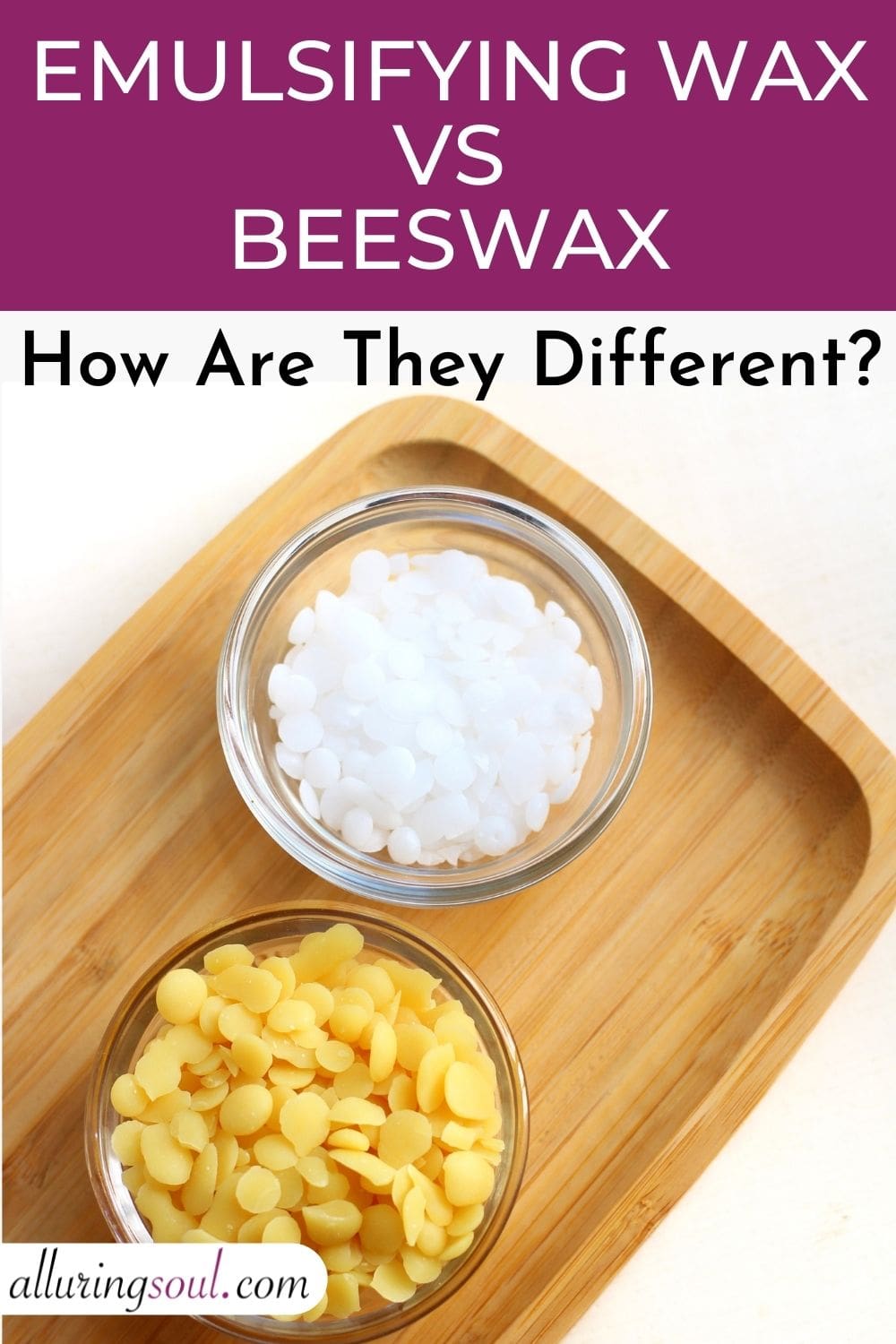
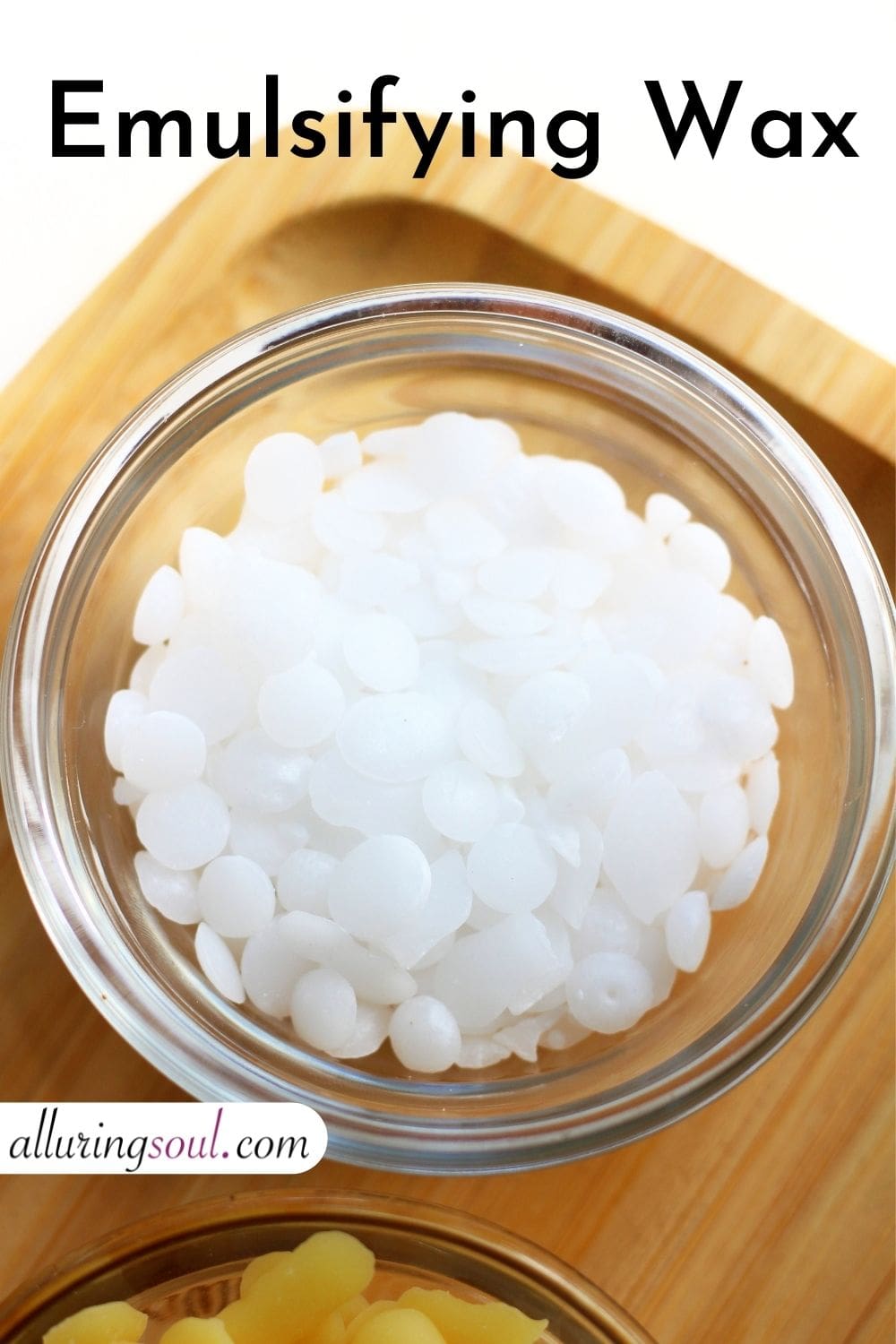
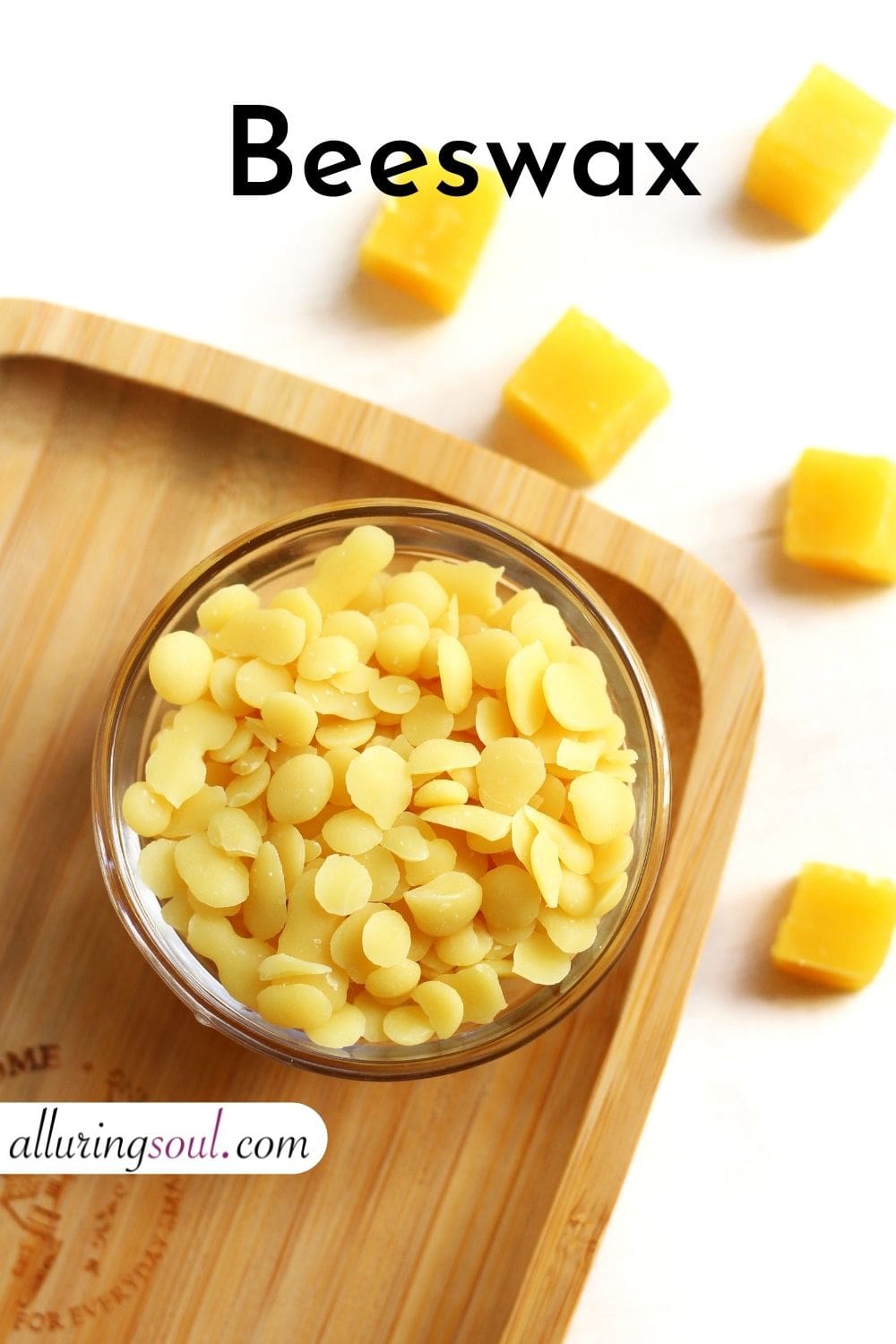
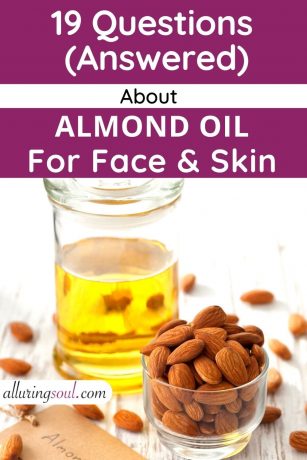
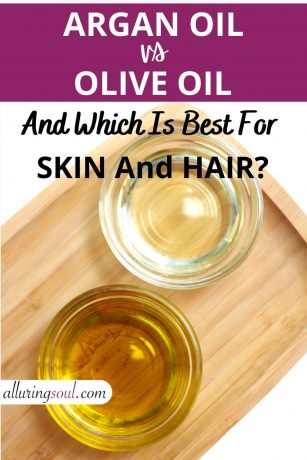
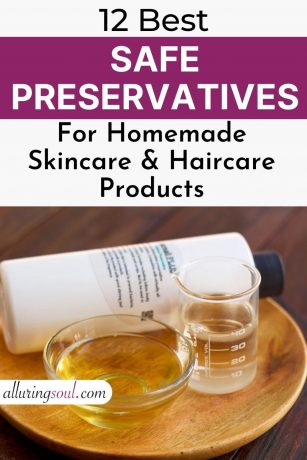
No Comments